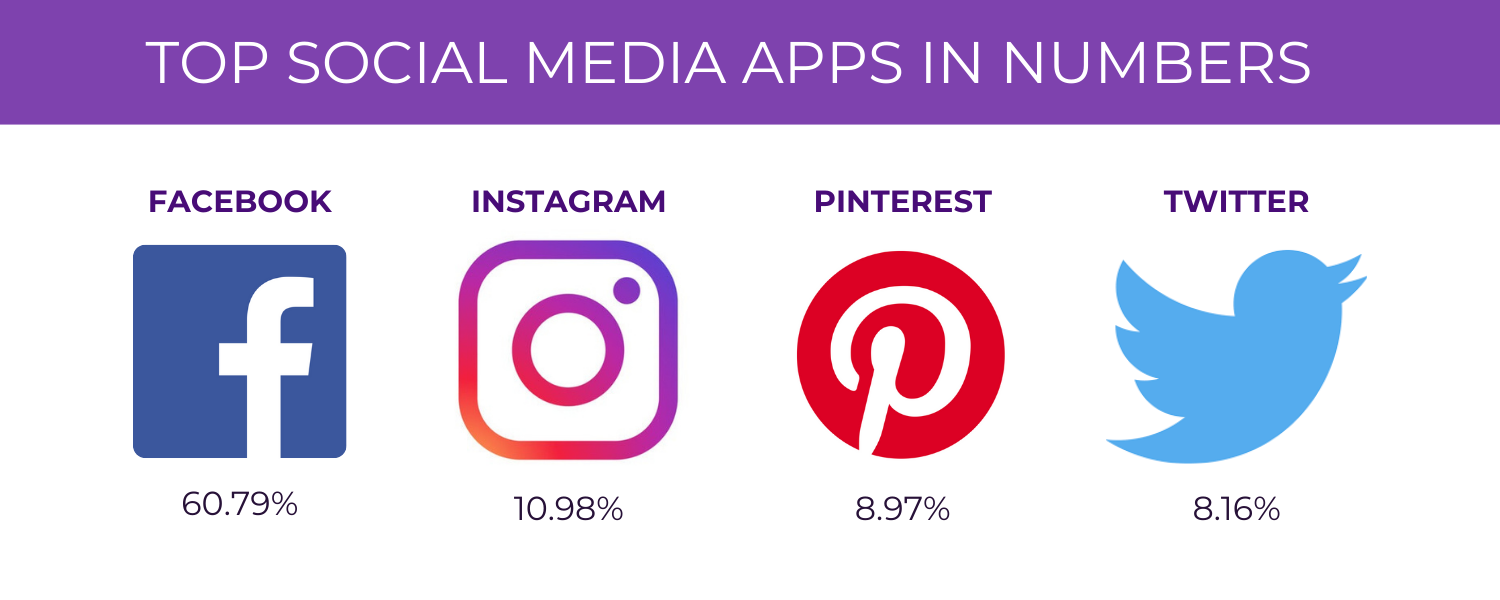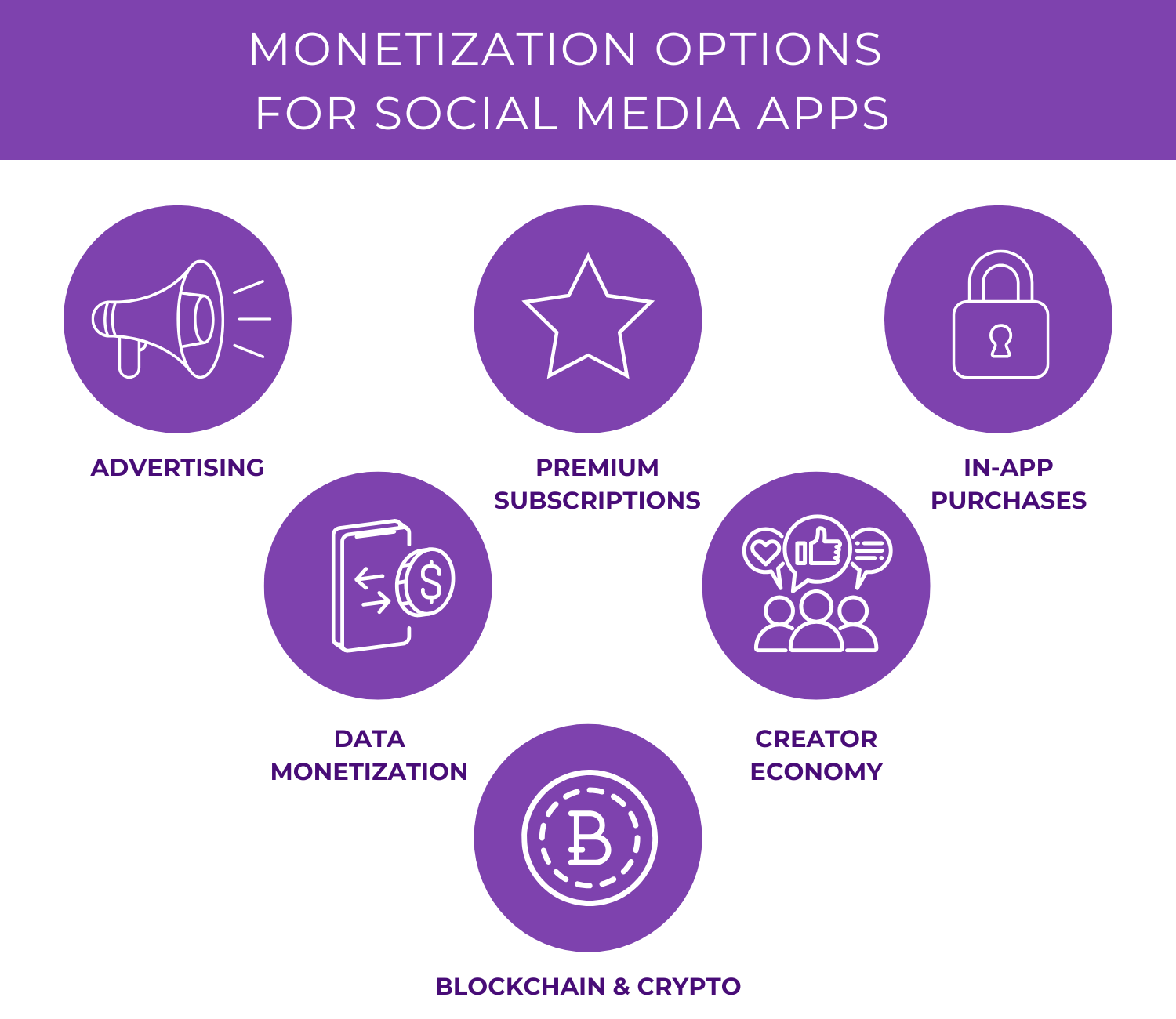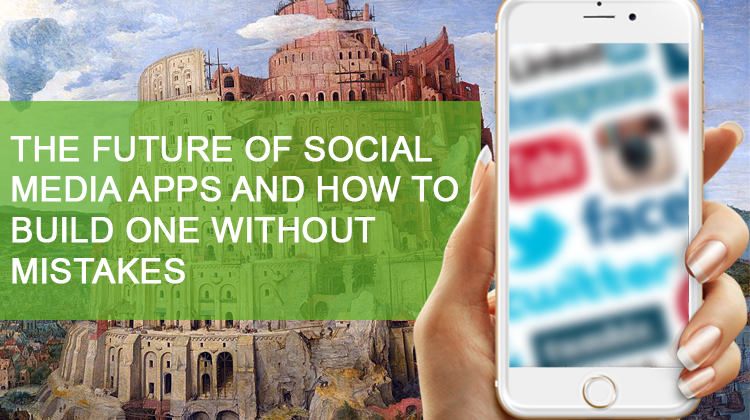Social media, once a groundbreaking tool for connection, have become a battlefield of algorithms, data breaches, and endless scrolling. Is it time to change?
In the digital age, the future of social media lies in innovation, privacy, and community. By learning from the past and harnessing the power of AI, we can build a platform that truly connects people.
Here’s our take on the future of social media apps. This is an update of the 2022 article. We accommodated new technological advances and trends.
Learning from the past
According to Statcounter, here’s how the world’s social media market is shared in 2024.

The rise of social media giants like Facebook, Twitter, and Instagram has forever changed the way we communicate and consume information. However, these platforms come with flaws. Data breaches, privacy scandals, and the spread of misinformation have eroded user trust and led to a decline in engagement.
Facebook’s privacy nightmare
Remember Facebook’s Cambridge Analytica scandal? Millions of users’ data was stolen and used to manipulate elections. And that’s not all. Frequent data breaches and lax privacy settings have made many users question Facebook’s commitment to their privacy. It’s a wake-up call for any social media platform aiming to build trust.
Twitter’s hate speech arena
Twitter (or X) has become a battleground for hate speech, harassment, and misinformation. Despite numerous attempts to curb these issues, the platform continues to struggle. High-profile account hacks have further exposed its security vulnerabilities, making it clear that Twitter has a long way to go to create a safe and inclusive online environment.
Instagram’s narcissist factory
Instagram has become a breeding ground for unrealistic beauty standards and unhealthy comparisons. The constant stream of carefully curated images and filters aggravated the negative body image and low self-esteem issues. Excessive use of the platform has also been linked to addiction, sleep disturbances, and decreased productivity.
As social media plays an increasingly significant role in shaping our mentality and societal values, it’s imperative to address the serious issues that have plagued the social networking platforms of today. By prioritizing user well-being, ethical AI, and data privacy, we can create a platform that empowers individuals and fosters positive connections.
Join us in exploring how we can bring this vision to life.
Read also: How to Make a Social Network App Like Instagram and Avoid Possible Pitfalls in Costs, Terms, and MVP.
How the next-gen social media can harness the power of AI
The future of social media lies in leveraging AI to create a more personalized, inclusive, and secure digital experience. By learning from the mistakes of past platforms and embracing cutting-edge technologies, we can build a new generation of social media that empowers users and fosters meaningful connections.
AI-powered personalization
- Tailored content. It’s important to deliver relevant and engaging content to users. AI algorithms will do that by analyzing user behavior and preferences in real-time.
- Dynamic UX. We want to make interfaces accessible and convenient for all. This is where AI can help as well.
'Smart'-er creativity
- AI-assisted content creation. We need AI tools to boost content creation (writing, music, art) by providing inspiration, suggestions, and automation.
- AI-powered virtual and augmented reality experiences. AI can enable immersive social experiences that blur the lines between the digital and physical worlds, fostering new forms of creativity and collaboration.
AI for greater good
- Ethical AI. By prioritizing transparency, accountability, and fairness, we can ensure that AI is used for good and avoids perpetuating biases or discrimination.
- AI for social impact. AI can be used to address social issues, such as climate change, poverty, and inequality, by fostering community engagement and empowering social movements.
By embracing the potential of AI, the next generation of social media can revolutionize the way we connect, create, and collaborate.
Curious to know how to create an app like SnapChat and how much it costs?
New-era social media bubble up as niche and virtual worlds
The digital landscape is rapidly evolving, and social media is no exception. We’re witnessing a shift from monolithic platforms to a diverse ecosystem of niche communities and immersive virtual worlds.
Niche social media offer a world of possibilities
The rise of niche social media platforms has opened up a world of possibilities for users and businesses alike. By catering to specific interests and demographics, these platforms can offer a more personalized and engaging experience than traditional social media giants.
- Visual artists’ world. Virtual art exhibitions brought to your doorstep. A platform will unite artists, apprentices, critics, art collectors and admirers. An opportunity for artists to reach their audience, network, and sell their creations. This platform could use AI to curate personalized art feeds and recommend potential collaborators. The security and intellectual property protection should be a priority, which is where blockchain technology will come in handy.
- DIY projects powerhouse. A platform for sharing DIY projects, tutorials, and tips. This platform could use AR to guide users through DIY projects step-by-step.
- Bookworms’ virtual club. A space for discussing books, sharing reviews, and connecting with fellow readers and beyond. A space for the fan fiction community, foreign culture exploration through reading, bookcrossing initiatives and whatnot. We don’t want reading to become a lost art, do we? This platform could use AI to recommend books based on users’ reading history and preferences.
- Pet owners’ paradise. A sketchboard for sharing pet stories, advice, and photos. AI may help identify different breeds and provide personalized care tips.
- Hikers’ network hub. Not just a map of hiking trails, tips, and photos, but a vibrant community of wanderers and their experiences. This is where AR technology can come to rescue in providing real-time information about trails, points of interest, and nearby amenities.
Metaverse redefining social media
The idea of the metaverse is gaining ground – transforming social media into immersive and interactive experiences. Imagine attending virtual concerts, collaborating on creative projects, or simply socializing with friends in a virtual world.
Key challenges
- Technical complexity. Building a seamless and immersive metaverse requires significant technical expertise and resources.
- User experience. Designing intuitive and engaging user interfaces for virtual and augmented reality can be challenging.
- Ethical considerations. Addressing issues like digital identity, privacy, and addiction is crucial.
Potential rewards
- New revenue streams. The metaverse opens new opportunities for monetization. You could sell virtual goods, advertising, and experiences.
- Enhanced social connections. It’s not about looks anymore. Immersive virtual experiences can connect people more meaningfully, based on shared ideas, interests, and experiences.
- Innovative business models. The metaverse will enable new business models, such as virtual real estate and digital marketplaces.
By carefully addressing the challenges and capitalizing on the opportunities, we can build a future where social media transcends physical boundaries and connects people in unprecedented ways.
Monetization strategies for next-gen social media
That’s one aspect done well. So we can carry something away from the giants. Here’s how some popular social media platforms have implemented these monetization strategies.

Traditional methods
Advertising
- Facebook runs display ads, sponsored content, and video ads as major revenue sources.
- Instagram popular formats are in-feed ads, stories ads, and reels ads.
Premium subscriptions
- LinkedIn Premium offers advanced job search features, InMail credits, and course access.
- Spotify Premium provides ad-free listening, higher audio quality, and offline listening.
In-app purchases
- Roblox users can purchase virtual items like clothing, accessories, and game passes.
- TikTok users can purchase coins to grant to their favorite creators or use them to unlock exclusive features.
Innovative approaches
Data monetization
- Google. While not strictly a social media platform, Google uses anonymized user data to improve search results and target ads.
- Facebook utilizes user data to understand preferences and deliver personalized ads.
Creator economy
- YouTube creators can monetize their content through ads, channel memberships, merchandise, and Super Chat.
- Twitch streamers can earn money through subscriptions, donations, ad revenue, and merchandise sales.
Blockchain and cryptocurrency
- OpenSea, a marketplace for NFTs, allows creators to sell digital assets.
- Binance Smart Chain, a blockchain platform, enables various decentralized applications, including social media dApps.
By understanding these strategies and learning from successful platforms, we can develop effective monetization models for the next-generation social media platform.
Conclusion
The future of social media is brimming with exciting possibilities. By leveraging AI, focusing on niche communities, and embracing the metaverse, we can create platforms that are more personalized, engaging, and inclusive.
However, it’s crucial to approach these advancements with caution and responsibility. We must address ethical concerns, such as data privacy, AI bias, and the potential negative impacts on mental health.
Ultimately, the success of future social media platforms will depend on their ability to balance innovation with human values. Do you share our view? Let us now in the comment!
How much does it cost to build a social media app with CodeTiburon?

